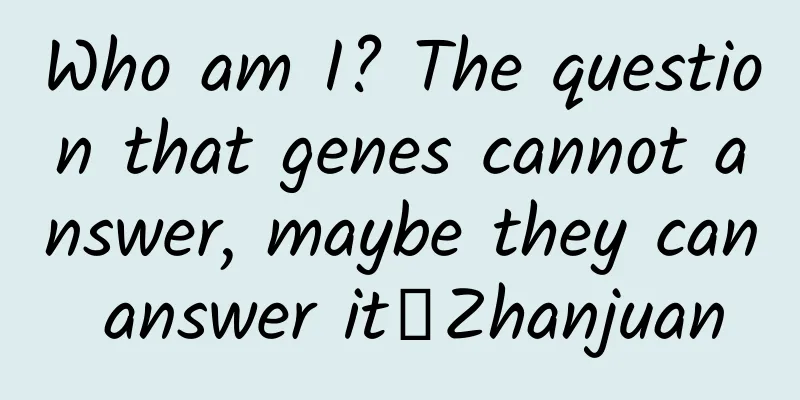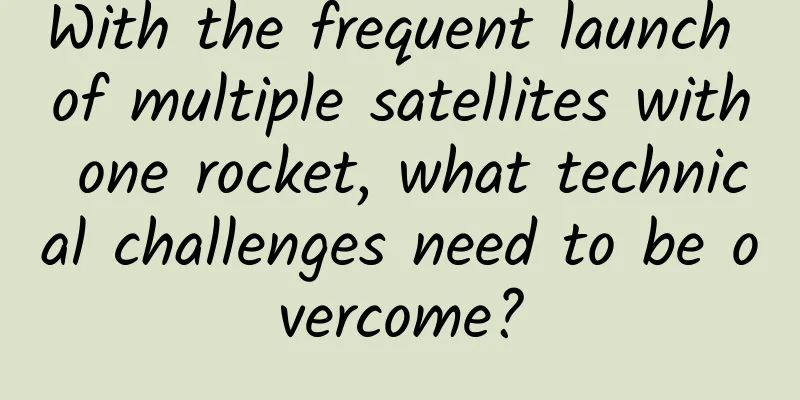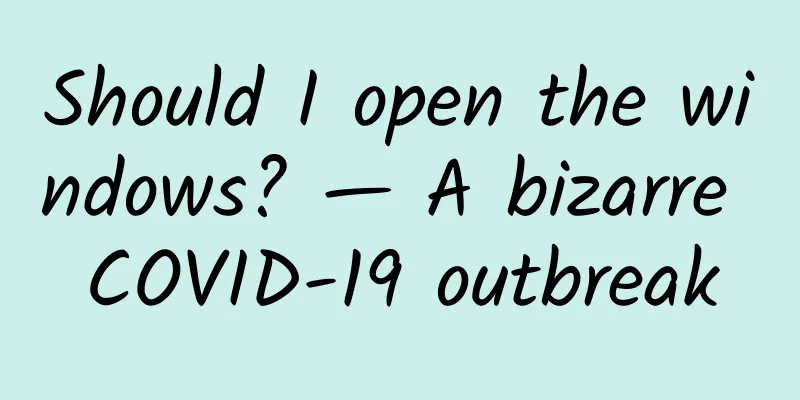Who am I? The question that genes cannot answer, maybe they can answer it丨Zhanjuan

|
"who I am?" The difference in genome determines the difference in physiological characteristics between one person and millions of other people. However, genes are just factory settings. How did the "me" who left the mother's womb become what I am today? What determines my thoughts and behaviors? Neuroscientists believe the answer lies in all the connections between neurons in the human brain. This article is authorized to be excerpted from the introduction of "The Magical Connectome" (People's Posts and Telecommunications Press, September 2022 edition), with some deletions and the title added by the editor. Written by | Sebastian Seung Translation | Sun Tianqi No road or footprint has ever crossed this forest. Only the long and graceful branches, endlessly and suffocatingly occupy all the space in this forest. They are entangled with each other, and the gaps between them are so narrow that even sunlight is afraid to see through. About 100 billion seeds were planted at the same time, growing this dark forest, and all the trees are destined to die one day. This is a magnificent forest, a forest of comedy and a forest of tragedy. This forest contains a lot, and sometimes I think this forest is everything. All novels and all symphonies, all cruel murders and all acts of kindness, all love and all quarrels, all humor and all sadness, come from this forest. You may be surprised to learn that this forest exists in a space less than a foot in diameter. There are more than 7 billion such forests on Earth, and you are the owner of one of them, growing in your skull. The trees I am talking about are special cells called neurons. The goal of neuroscience is to explore their strange branches and conquer this jungle of the mind (see Figure 1). Figure 1 The jungle of the mind - neurons in the cerebral cortex. Stained using the method of Camillo Golgi (1843-1926) and drawn by Santiago Ramón y Cajal (1852-1934) Neuroscientists have heard their voices, the electrical signals in the brain, and they have revealed the morphology of neurons with precise drawings and photographs. But how can we understand the forest from just a few scattered trees? In the 17th century, the French philosopher and mathematician Blaise Pascal described the vastness of the universe this way: Let a man cast aside the humble things before him, and look upon the greatness and majesty of the whole natural world. Let him see the great light that burns like an eternal lamp over the world. Let him see the earth, and let him know that it is but a point compared with the great circle of the sun. Let him marvel that the great circle of the sun is also a tiny point in the view of the stars in the heavens. These thoughts shocked Pascal, who felt his own insignificance, and he admitted that "eternal silence and infinite space" frightened him. He was thinking about the outer space, but we only need to think about "thinking" itself to feel the same fear as him. In the skull of each person, there is a magnificent organ, which is probably infinitely complex. As a neuroscientist, I understand Pascal’s fear firsthand. At the same time, I also experience a certain embarrassment. After each of my public appearances about progress in our field, I am bombarded with questions: What causes depression and schizophrenia? What’s so special about the brains of Einstein and Beethoven? How can I help my children learn better? I can’t give satisfactory answers to these questions, and the audience’s faces fall. I feel so embarrassed that I end up apologizing to the audience: “I’m sorry, you think I’m a professor because I know all the answers; in fact, I’m a professor precisely because I know how ignorant I am.” Studying something as complex as the brain seems almost futile. There are hundreds of billions of neurons in the brain, like many different kinds of trees in different shapes. Only the most determined explorers dare to go into such a forest to take a look, but when they go in, they can only see a little bit, and they can't see it clearly. There is no doubt that the brain is still a mystery. Let alone the diseases and special advantages of the brain that my audience is curious about, even the most mundane questions are difficult for us to explain now. How does the brain remember the past, perceive the present, and imagine the future every day? I dare say that no one really knows. Given the complexity of the human brain, some neuroscientists have turned to studying animals with very few neurons. For example, the worm in Figure 2 does not have an organ we call a brain. Its neurons are scattered throughout the body, not concentrated in one organ. It has only 302 neurons in total, which make up its nervous system. This sounds easy to study, and I believe that even a pessimist like Pascal would not be afraid of the "forest" of Caenorhabditis elegans (C. elegans, the scientific name of this about 1 mm long worm). Figure 2 Caenorhabditis elegans Each of the insect's neurons has a specific location and shape, and is given a unique name. The insect is like a precision machine mass-produced on a factory assembly line: each insect's nervous system is made up of a set of identical parts, and each of these parts is always assembled in the same way. Moreover, the structure of this standardized neural system has been completely mapped. The result is Figure 3, which looks a lot like the flight map on the back cover of an aviation magazine. Each neuron has a four-letter name, just as each airport has a three-letter code. The lines represent the connections between neurons, just as the lines on a flight map represent routes between cities. Two neurons are said to be "connected" if there is a point of intersection between them called a synapse. Through the synapse, one neuron can pass information to another neuron. Figure 3. The structure of the nervous system of Caenorhabditis elegans, or the connectome Engineers know that to build a radio, you connect resistors, capacitors, transistors, and other electronic components. Similarly, to build a nervous system, you connect neurons through their thin branches. So diagrams like Figure 3 were originally called wiring diagrams. Recently, we have come up with a new term: connectome. This term is no longer inspired by electrical engineers, but by genomics. You may have heard that DNA (deoxyribonucleic acid) is a long chain of molecules, and each point on this chain is called a nucleotide. There are four types of nucleotides, represented by the letters A, C, G, and T. Your genome is the entire sequence of these nucleotides in your DNA, or you can think of it as a long string of four letters. This string has a total of about 3 billion characters, which would be a book of 1 million pages. Figure 4 shows a small fragment of it. Figure 4 A small fragment of the human genome Likewise, a connectome is the totality of connections between neurons in a nervous system. The term, like a genome, means the whole. A connectome is not one connection, not many connections, but all the connections. In theory, your brain could be represented by a wiring diagram, just like the worm, but your brain is much more complicated. So, what interesting things can your connectome say? First, it shows that you are unique. You might say you've known this for a long time (of course you have), but it's been surprisingly difficult to figure out what makes you unique. There are huge differences between your connectome and mine, and they're different from the standardized connectomes of those bugs. In this sense, everyone is unique, but those bugs are not. (No offense to the bugs!) Variety is the source of happiness. One of the most interesting things about studying how the brain works is that everyone's brain works so differently. Why can't I be as outgoing as my extroverted friend? Why can't my son keep up with his classmates in school? Why does my little cousin hear voices? Why does my mom lose her memory? Why is my lover (or myself) not so understanding? The mind is different from the mind because the connectome is different. This theory is often implied in newspaper headlines such as "Autistic Brains Are Different Than Normal Brains." The connectome may also explain personality and IQ, and perhaps your memory. Your memories are the most unique part of you, and they may be encoded in your connectome. Although this theory has been around for a long time, neuroscientists still don't know if it is correct, but it is clear that the significance of this theory is very significant. If it is correct, then the fundamental way to treat mental disorders is to repair the connection group. In fact, any change in a person, such as improving their temperament, reducing drinking, or saving a marriage, is actually a change in the connection group. Here's a different theory: The mind is different because the genome is different. In short, your genome makes you who you are. We're now in an age where we can sequence our own genomes, and it won't be long before we can sequence our own DNA quickly and cheaply. And we know that genes play a role in mental disorders or common traits like personality and IQ. So, if the genome is already so well studied, why study the connectome? The reason is simple: Genes alone cannot explain why the brain works the way it does. You already had your entire genome when you were curled up in your mother's womb, but at that time, you had no memory of your first kiss. Your memories are formed throughout your life, not innate. Some people can play the piano, and some people can ride a bicycle, these are learned skills, not instincts that come with genes. Unlike your genome, which is fixed from the moment your mother conceived you, your connectome is constantly changing throughout your life. Neuroscientists have figured out how these fundamental changes occur. First, neurons adjust their connections to one another, making them stronger or weaker, thereby reweighting those connections. Second, neurons can create new synapses or lose one so that they can rewire, and they can also change the structure of their wiring by growing new branches or retracting old ones. Finally, new neurons are constantly being created and old neurons are constantly dying, which causes the connections to be rebuilt. We don't yet know exactly how your life experiences—your parents' divorce, say, or your epic overseas adventure—change your connectome. But there's a lot of evidence to suggest that the four re-empowerments—reconnections, rewiring, and regeneration—are influenced by your experiences. At the same time, the four re-empowerments are also directed by your genes. Genes do influence the mind, especially in infancy and childhood, when the brain begins to make connections. The connectome is shaped by both genetics and experience, and both influences must be considered to explain how the brain works. The connectome theory is compatible with the genome theory, but it is richer and more complex than the latter because it takes into account the effects of your life in this world. In comparison, the connectome theory is less fateful because it believes that our connectome can be shaped by our behavior and thinking. The brain's wiring structure makes us who we are, but in turn, we also influence the brain's wiring structure. This theory can be summarized as follows: You are more than your genome, you are your connectome. If this theory is correct, then the most important goal of neuroscience is to harness the four “reconnections.” We need to know what changes in the connectome will cause us to exhibit the behaviors we want, and then we need to develop methods to produce those changes. If we succeed, neuroscience will be able to effectively treat mental disorders, heal brain damage, and make life better. However, this is a daunting challenge given the complexity of the connectome. The C. elegans nematode has only 7,000 connections, but it took us more than 10 years to map its connectome. Your connectome is 100 billion times larger, with 1 million times more connections than the number of letters in your genome. Compared to your connectome, your genome is child's play. Today, we finally have powerful technology and tools to face this challenge. With the most advanced microscopes, our computers can collect and store huge databases of brain images, helping us process and analyze the overwhelming data flow to map the connections between neurons. Relying on such machine intelligence, we can finally see the connectome that has eluded us for many years. I believe that before the end of the 21st century, we will have the opportunity to sequence the entire human connectome. We will move from nematodes to fruit flies, then to mice, then monkeys, and finally to the ultimate bastion: the human brain. When future generations look back on our series of achievements, they will be amazed at how important this scientific revolution was. Do we have to wait several decades for the connectome to reveal some secrets about the brain? Fortunately, not really. Current technology is sufficient to allow us to see the connections of a small part of the brain, and such local knowledge is also very useful. In addition, mice and monkeys can also help us figure out many problems because we are close evolutionary relatives. Their brains are very similar to ours, and many of the operating principles are the same. Studying their connectomes will also bring many insights into understanding our own brains. In 79 AD, Mount Vesuvius erupted, and tons of volcanic ash and magma buried the Roman city of Pompeii. The time of Pompeii was frozen, and it slept underground forever until it was accidentally discovered by construction workers nearly two thousand years later. Archaeologists in the 18th century dug it up and were extremely excited to see a vivid picture of Roman life - luxurious holiday villas, fountain landscapes on the streets, public baths, bars, bakeries, markets, gyms, theaters, murals reflecting food, clothing, housing and transportation, etc. This is a dead city, but it allows us to observe the details of Roman life. Like Pompeii, the connectome is now available only through analysis of images of dead brains. This work is called neuroanatomy, but we can think of it as brain archaeology: Generations of neuroscientists have peered at the cold corpses of neurons under microscopes and pondered their past. A dead brain, its molecules frozen in embalming fluid, is a monument to the thoughts and feelings that once sprang from it. Whereas neuroanatomy once resembled reconstructing an ancient civilization from scattered evidence like coins, graves, or pottery jars, the connectome, like Pompeii, is a frozen panorama of the brain. These panoramas have given neuroanatomists a revolutionary ability to study and reconstruct the function of the living brain. You might ask, since there are cool technologies that can directly study living bodies, why do we need to study dead brains? If there is time travel, wouldn't it be possible to travel directly to the intact Pompeii to see more? In fact, this is not necessarily the case. If you imagine it, it is not difficult to find that there are many limitations to visiting and observing an active city. When you observe the behavior of a living person, you miss the behavior of others at the same time. Or you can observe the average activity of an area through infrared satellite images, but you can't see more specific details. Because of these constraints, it is not as smooth as we think to directly inspect an active city. The technology we use to directly study the living brain also has such limitations. By opening the skull, we can observe the morphology and electrical signals of neurons, but the brain has hundreds of billions of neurons, and we can only observe a very small part at a time. If we use non-invasive imaging technology to observe the inside of the brain through the skull, we cannot observe individual neurons, and can only obtain rough information such as the morphology and activity of a region. Perhaps one day in the future, there will be more advanced technology that will allow us to break through these limitations and directly observe every neuron in the living brain, but for today, this is just a fantasy. In fact, studying the living brain and the dead brain each has its own advantages and disadvantages. In my opinion, the best way is to combine these two methods at the same time. However, there are some neuroscientists who believe that studying dead brains is meaningless and that only studying living brains is the way to go in neuroscience. Their reasons are: You are the activity of all your neurons. The "activity" here refers to the electrical signals of neurons. These electrical signals can give a lot of information, that is, the activity of neurons at any moment, which encodes your thoughts, emotions and feelings at that moment. I have said before that you are your connection group, and now here it is said that you are the activity of all your neurons, so what are you? These two statements seem contradictory, but in fact they are compatible because they involve different understandings of the self. The self referred to by the activity theory is a dynamic self that changes all the time. You may be angry now, but become excited after a while, and then think about the meaning of life, do some housework, appreciate the fallen leaves outside, and then turn on the TV to watch a football game. This self is inseparable from consciousness. Because the activity of neurons in the brain is always changing, the nature of this self is changeable. The connectome theory, however, refers to a static self, like your childhood memories that stay with you throughout your life. This essence of self—often called personality—is stable, a fact that comforts our family and friends. Your personality manifests in your conscious mind, but it persists when you are not conscious, such as when you are sleeping. This sense of self, like the connectome, changes only slowly over time. This is the connectome theory of self. In the past, people have done a lot of research on the self-attraction of consciousness. In the 19th century, American psychologist William James proposed the "stream of consciousness", that is, consciousness is like a river, always flowing in the mind. But James forgot one thing, that is, all rivers need riverbeds. Without those grooves on the ground, the water would not know where to flow. It is the connection group that provides the path for neural activity to flow. In this sense, it should be called the "riverbed of consciousness." It’s a great metaphor. Just as water flows slowly over time and shape the riverbed, neural activity shapes the connectome. These two different conceptions of self, the fast-moving, ever-changing river water and the stable, slowly changing riverbed, are inseparable. About the Author Sebastian Seung is the Anthony B. Evnin Professor of Neuroscience and Computer Science at Princeton University, President of Samsung Electronics and Director of Samsung Research Institute, and a pioneer in the field of connectomics. Special Tips 1. Go to the "Featured Column" at the bottom of the menu of the "Fanpu" WeChat public account to read a series of popular science articles on different topics. 2. Fanpu provides a function to search articles by month. Follow the official account and reply with the four-digit year + month, such as "1903", to get the article index for March 2019, and so on. Copyright statement: Personal forwarding is welcome. Any form of media or organization is not allowed to reprint or excerpt without authorization. For reprint authorization, please contact the backstage of the "Fanpu" WeChat public account. |
<<: If the fruit is moldy, can I still eat it after removing the moldy part?
Recommend
Overseas Promotion丨How to get millions of views on TikTok?
TikTok Ads Performance Advertising Optimization T...
Android | LruCache cache strategy
Introduction to LruCache LruCache is a cache clas...
How much does it cost to develop an online recharge app in Wujiaqu?
There are two types of Wujiaqu Online Recharge We...
Apple's financial report during the epidemic: iPhone sales declined, but iPhone 12 cannot be late
In the past few months, the epidemic has become a...
Tik Tok’s operation routines to gain millions of fans!
With the end of Produce Camp 2021, Han Mejuan onc...
Want to take the hottest e-sports ride? Acer V5-591G EDG Special Edition boot experience
Perhaps the vast majority of e-sports games canno...
How to sell products on Douyin? One article will tell you everything!
The two most popular words recently are online an...
5 ways for educational institutions to monetize live streaming in 2021
Live streaming sales have been popular from 2020 ...
Is AI invincible in fake human voice?
One morning in 2014, Val Kilmer woke up and found...
How much do you know about the information flow advertising routines of highly profitable products?
After reading this article, I hope you can improv...
Even light can be frozen! What is the concept of "absolute zero" of -273.15 degrees?
What is temperature? You might think, isn't t...
How much do African birthday wishes cost? How much does it cost for African children to shout birthday wishes?
Video of African children holding signs and shout...
Overall planning scheme for Tik Tok short video operations!
Tik Tok short videos are very popular, and both i...
China Passenger Car Association: In-depth analysis report on the national passenger car market in October 2022
This article is an authoritative in-depth market ...
Analysis of the current status of the video material market and advertising strategies!
Everyone is familiar with advertisements. There a...









